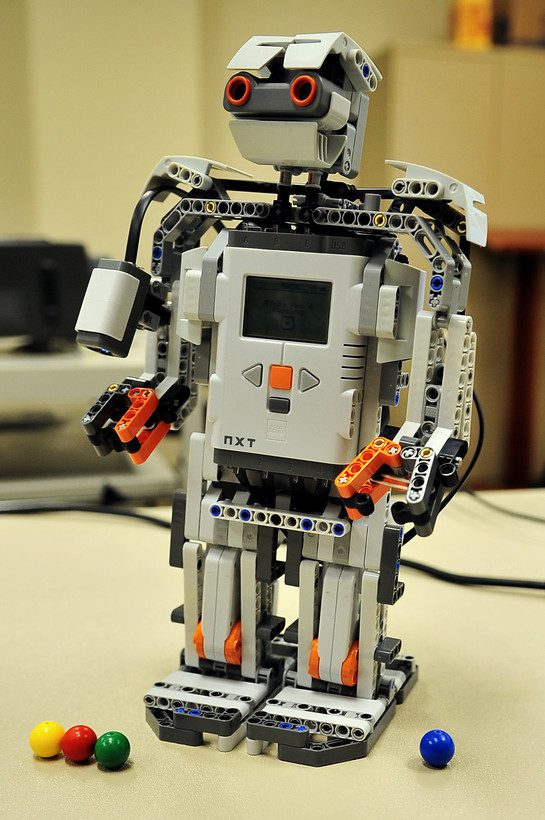
Robotics R&D (research and development) and technical innovations are daily changing our world. There are now various types of robots for assorted robotics applications this includes humanoid robots, robot vacuum cleaners, pizza makers and hamburger making robots. Moreover, robots are starting to make their way into our homes and businesses.
Robots are becoming commonplace in industrial sectors such as automobile and electronics manufacturing. They will also be increasingly recruited by food production, retail, healthcare and distribution operations in the near future.
As a result, the staffing of robotic engineers, scientists, information technology (IT), research and development (R&D) and manufacturing technology talent is skyrocketing. This results in many recruitment managers having unfilled robotics job openings. This robot trend will only increase in the future.
This is why the Strategic Search Corporation recruitment team can help you. We specialize in recruiting qualified robot technical, engineering and scientific candidates worldwide!
It is very important for you to have a robots recruiting partner like Strategic Search Corporation. To highlight that point, here are some predictions of where automation and robotics are likely to make waves in the future.
Robots Becoming Increasingly Commonplace In Our Homes
The use of home assistance robots had been slow to take off except for robotic vacuum cleaners. But, that is now changing with whole breed of startups and established companies engineering new robots.
Case in point is Amazon’s new home robot. At $999, Astro is engineered for home monitoring, eldercare and and portable Alexa experience!
The apparent applications are plentiful. Ideas range from robotic companions for the elderly to robots designed to feed, play with and care for pets while their owners are out.
Robotic vacuum cleaners took off because they filled a real need. Plus they were affordably and able to carry out the tasks they were designed for.
Other robotic assistants – such as mobile virtual assistants – have not been so warmly received. The breakthrough will come when companies have gathered and analyzed real-world data on what people do, and don’t, want from robots.
There are promising projects which hopefully will leave the starting blocks this year. One includes Nvidia’s collaboration with Ikea. They aims to develop the first commercially successful robotic kitchen assistant.
Tech companies are finally getting the recipe for domestic robots right!
Delivery Robots Become A Reality
Robotic delivery devices are presently tipped to solve the “last mile” problem inherent to delivery operations. That final mile is the most expensive stage of the delivery process. At that point many small, individually packaged, products must be precisely targeted to reach their final destinations on time and intact.
Some of these robots are designed to work in large indoor environments – such as Segway’s Loomo robot. This robot delivers internal mail in workplace settings such as office blocks and shop floors.
Nuro, a robot designed by a team of Google engineers, will deliver fresh groceries as well as hot food, thanks to its separate heated and chilled cargo bays. Nuro is already able to deliver in parts of Phoenix, AZ.
The city is a hotbed of robotic activity thanks to its grid-like streets. Phoenix is also hosting the world’s first autonomous taxis, thanks to Waymo, another Google spin-off.
Of course, there is also the parcel delivery via airborne drones. Amazon is working on this system and JD.com has already implemented it during the past year.
More Of Us Will Work Alongside Robots
Collaborative robots, or cobots, are the friendly face of workplace automation. They are not meant to steal away our jobs, but to work alongside us providing timely advice or simply mechanical muscle at times we need their assistance.
Robotic technology will becomes more widespread and deployment costs will fall. Businesses will realize that they can drive efficiency by deploying robots in unsafe or inhospitable environments.
Amazon’s warehouse robots are a good example. They bring items to human workers for packaging. Therefore, only comparatively small areas of their vast real estate portfolios need to be heated and made comfortable for the humans who work alongside the machines.
Collaborative robots may also provide an avenue for companies to avoid the wrathful eye of the regulators. Those agencies may try to impose punitive measures on businesses which replace humans with automation.
Politicians have already proposed “robot taxes” to cover these eventualities. Therefore fostering harmonious working relationships between humans and machines could be a trend which will set people’s minds now and the future.
Robots On The Edge
Robots made ideal platforms for edge computing. We are building sensors into the extremities of automated systems. Machines can then meet the real-world environments they are built to influence.
We are daily seeing advances in smart sensors. These sensors have built in artificial intelligence. Thus they help reduce the need for information to be sent to the cloud or centralized servers for processing, before it can be acted on.
Those leading the charge include Baidu – which has just unveiled China’s first open source edge computing platform, OpenEdge. This platform allows robot developers to empower their creations with artificial intelligence (AI).
The technology reduces CPU and bandwidth overheads used by cloud infrastructure. This should enable smarter, more autonomous robots to begin to appearing in homes and industrial settings more and more now and in the future.
The Emergence Of Open Standards For Robotics
Referring to open source, 2021 should see a consolidation of the standardization needed for AI enabled robots to achieve mass market penetration. Regulators will have a part to play here.
Frameworks are put in place to govern the ways personal data can be collected and used by autonomous machines. These not only include self-driving cars but also autonomous home and industrial assistants.
With the legal framework offering reassurance and trust, real innovation is likely to emerge from the open source community itself. There is already a hotbed of robotic development and activity there.
Amazon recently announced the launch of its AWS RoboMaker platform. The platform is built on the open source Robotic Operating System (ROS) standards.
This is a lowering of the entry barrier towards involvement in the development and deployment of robots. It should mean more organizations of all shapes and sizes stand to benefit from the robot revolution coming over the next 12 months.
Call On Strategic Search Corporation For Your Robotics Recruiting Needs
Robotic engineers, scientists and technical talent are in high demand and short supply. Therefore, you need a robotics recruitment partner such as Strategic Search Corporation to assist you.
We are well connected with major robotics, artificial intelligence, machine learning and sensors groups. This means that we can succeed in recruiting the job talent you desire when other methods fail.
Call Scott Sargis at 312.944-4000 to learn more. Or click below to use our contact form.




